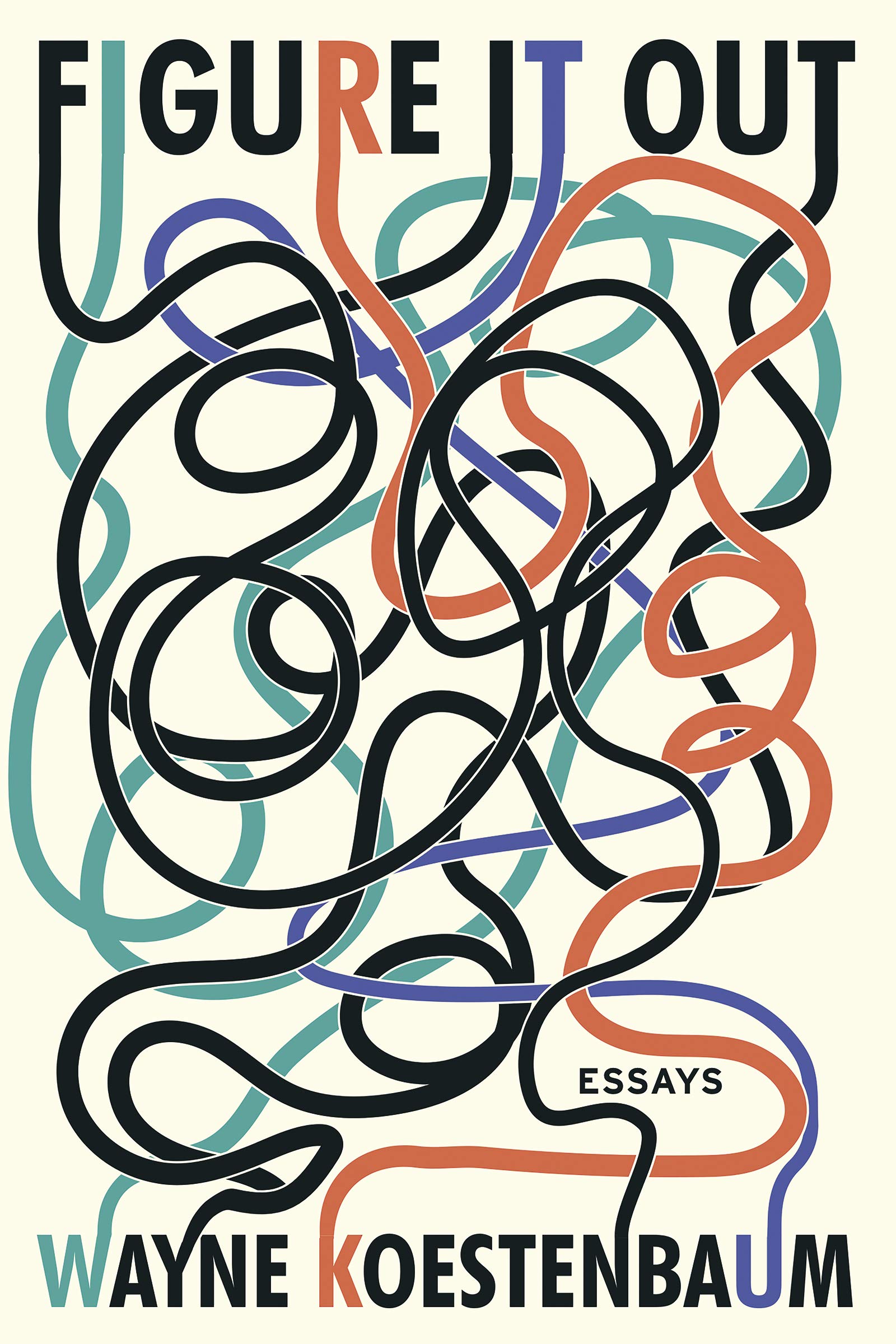Figure It Out is a collection of essays by Wayne Koestenbaum, with a “loopily expansive” cover designed by Michael Salu, whose striking art reflects Koestenbaum’s discursive writing style.
Unlike many examples of theory, which can be intellectually rigorous but narratively stagnant, Koestenbaum’s essays actively analyze and move like investigations, encouraging readers to follow along like Watson to Holmes. Although the writing can be wordy and indirect, the essays are engaging, and it becomes an adventure to follow Koestenbaum’s playful and occasionally raunchy train of thought.
Figure It Out is largely about language and communication. Koestenbaum focuses on the transformative effects of minute choices in punctuation and line breaks, as well as translations from one physical sense to another. He sees language as an invention, lovingly constructed but not always reliable. Thus, he attempts to undo its harmful edifices and continuously strives for a clearer way to express his thoughts. Language always failing may sound like a dour outlook, in reality, it leaves infinite space for literary experimentation.
In addition to re-examining language and the world around us, this collection of essays explores absence (as opposed to a more passive emptiness), in-between spaces, trauma, and what truth we learn from fiction — but this is only the tip of the iceberg.
“The writer’s obligation … is to play with words and to keep playing with them,” Koestenbaum writes, “not to deracinate or deplete them, but to use them as vehicles for discovering history, recovering wounds, reciting damage, and awakening conscience.”
Koestenbaum encourages this experimentation by including lists of prompts that urge readers to re-examine their understanding of the world and to transform that knowledge into art. One such example of his reads, “Buy a one-dollar cactus, and start anthropomorphizing it. Call it Sabrina.”
The title Figure It Out can be understood in two ways. In one sense, it is what he is doing throughout the book, the ‘it’ often being why he thinks or feels a certain way. In another sense, it means shaping or constructing in order to expand from the center outwards. These two meanings overlap within the collection and provide just one example of Koestenbaum’s fluidity of language. Either way, it is a call to action to the readers to do the same.
Figure It Out
By Wayne Koestenbaum
Soft Skull Press
Paperback, 9781593765958, 288 pp.
May 2020
More on Wayne Koestenbaum
‘Camp Marmalade’ by Wayne Koestenbaum



